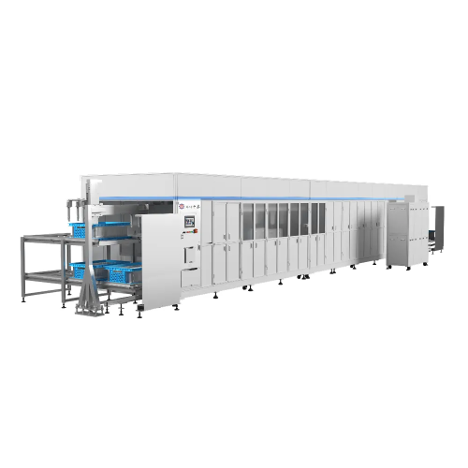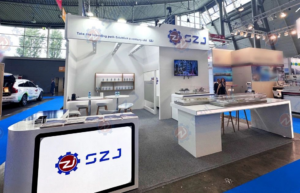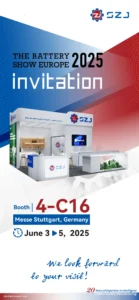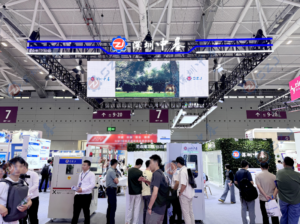Battery water or battery electrolyte is a crucial component when manufacturing a battery. It’s free from minerals and ensures the electrolyte in the battery maintains its desired purity and concentrations, contributing to its longevity. However, over time, the electrolyte for a battery may evaporate, requiring you to refill the battery’s electrolyte.
To help you in this regard, we are going to discuss the composition of an electrolyte for a battery, its principles, and the factors that may affect the filling process. Let’s begin!
Composition of Battery Electrolyte
Lithium-ion battery is the carrier of ion transmission in the battery and is made of organic solvent and lithium salt. The composition of lithium-ion battery is given as:
1. Solvents
Here’s one of the major organic solvents that can be used in lithium-ion batteries: Ethylene Carbonate.
It’s a colorless liquid that stays in white crystal form at room temperature and has a boiling point of 248℃/760mmHg[1]. It’s indispensable in lithium-ion batteries due to its ability to form stable SEI on graphitic anodes.
However, Ethylene Carbonate[2] is solid at room temperature, and its combination with lithium salts results in a viscous solution. That’s why it’s used with other linear carbonates, such as DMC (dimethyl carbonate) and DEC (diethyl carbonate), which also enable low-temperature operation.
2. Lithium Salt
Lithium Hexafluorophosphate is a typical lithium salt that’s part of the electrolyte for a battery (lithium-ion). It exhibits a white crystal or powder form, has a 2.84 g/cm3 density[3] and is easily soluble in water. It’s the top choice when it comes to electrolytes for batteries. The reason is that lithium hexafluorophosphate has high ionic conductivity and good electrochemical stability.
The electrolyte for a battery also comprises some additional film-forming additives, flame retardant additives, and conductive additives. They control the content of H2O and HF in electrolytes and improve the overall low-temperature performance for the longevity of the battery.
Criteria of Electrolyte for a Battery (Lithium Ion)
The criteria an electrolyte for lithium-ion battery must meet are given as follows:
- Conductivity: The electrolyte must have high ionic conductivity, typically between 1×10^-3 to 2×10^-2 S/cm, to ensure efficient ion transportation.
- Stability: The electrolyte for a battery should be chemically stable and compatible with the battery electrodes over a wide temperature range.
- Safety: Safety is paramount, so keep the battery water thermally stable to minimize risks of combustion or overheating.
Principles of Electrolyte Filling
Here are the major principles of an electrolyte for a battery filling that you must know:
- Air pockets within the battery can resist ion flow; therefore, it’s essential to opt for a filling technique to remove air during the filling process.
- Make sure the filling is even if all pores of the electrolyte are filled.
- Electrolytes for battery are often flammable, so you should carry out the filling process in a dry area with proper safety measures in place.
Factors that Affect the Performance of Electrolyte for a Battery When Filling
Let’s discuss the factors that may affect the performance of an electrolyte for a battery during the filling process:
The Filling Capacity
An optimal quantity of electrolyte is needed for efficient battery performance, as poor or overfilling can result in issues like reduced ion transport and leakage.
To determine the volume of the electrolyte for a battery is calculated by adding the pore volumes of the positive electrode, negative electrode, and separator[4]. The pore volume of each component is determined by multiplying the area of the active material by the thickness and porosity[4].
The Filling Pressure
The pressure should also be controlled during electrolyte filling to ensure it properly penetrates the cell. Too high or too low pressure may cause damage to internal battery components. The standard pressure when filling electrolytes for batteries can vary depending on the different battery types and manufacturer’s guidelines.
The Infiltration Speed
Infiltration speed is the rate at which the electrolyte for a battery spreads over its electrode. It is determined by several factors, including the battery type, design, and manufacturing process.
The Filling Temperature and Humidity
The last and definitely not the most minor things that may affect the filling of electrolytes are temperature and humidity. It’s because electrolyte viscosity is temperature dependent, and a little imbalance in moisture can cause moisture contamination, which can degrade the battery. Here are the details:
- Temperature
The temperature during electrolyte filling should typically be within a specific range to ensure proper electrolyte distribution and prevent thermal stress on the battery components. The recommended temperature range for electrolyte filling is often between 20°C and 30°C[5]. Extreme temperatures should be avoided, for they can negatively impact the battery’s performance and safety.
- Humidity
Humidity levels can also make an impact on the electrolyte-filling process, as excessive moisture can affect the battery’s performance and cause corrosion. It is generally advised to maintain a moderate humidity level, typically between 30% and 60%[5], during electrolyte filling.
SZJ Automation’s Battery Electrolyte Filling Machine
Electrolyte filling is a critical step in the battery manufacturing process. Operators should consider composition, filling standards and principles, and more. And our SZJ Automation’s Battery Electrolyte Filling Machine is built for the accurate filling of an electrolyte for a battery. This advanced machine ensures accurate filling of battery water, maintaining a controlled environment to uphold high standards of quality assurance. Here’s how:
1. Precision Filling
Our Battery Electrolyte Filling Machine features a highly accurate liquid injection pump, ensuring a deviation of only 0.30%. This precision guarantees that each battery receives the exact amount of electrolyte needed without overfilling or underfilling.
2. Controlled Environment
This electrolyte filling machine operates within a tightly controlled environment, maintaining a chamber vacuum leakage of less than or equal to 1kpa/min. This controlled atmosphere minimizes the risk of contamination and ensures the integrity of the electrolyte-filling process.
3. Quality Assurance
With a seal thickness deviation of less than or equal to ±25μm, our machine ensures each battery is sealed perfectly. This meticulous attention to detail prevents leaks and extends the battery’s operational life.
4. Efficiency and Cost Reduction
Designed for high-volume filling electrolytes for battery, SZJ Automation’s Battery Electrolyte Filling Machine optimizes production workflows, thereby enhancing factory throughput. The single-machine scrap rate is maintained at a very low level (≤0.5%), significantly reducing waste and associated costs.
As a result, this electrolyte-filling machine manufactured by SZJ Automation fits in car battery manufacturing, backup power production lines, the assembly of battery-powered medical devices, and more.
Conclusion
The electrolyte for a battery is the most crucial component of lead-acid and lithium-ion batteries. Various factors, including the filling capacity, the pressure, and the filling speed, impact electrolyte performance in a battery. So, it is important for battery manufacturers to invest in an accurate and reliable filling solution.
We, SZJ Automation, can always provide our clients with reliable electrolyte-filling machines to meet various battery manufacturing needs. With over 20 years of experience in studying battery manufacturing, you can trust with no hesitation. Contact us today for better filling electrolytes for the battery!
Reference
- Available at: https://en.wikipedia.org/wiki/Ethylene_carbonate
- Available at: https://pubchem.ncbi.nlm.nih.gov/compound/Ethylene-carbonate
- Available at: https://en.wikipedia.org/wiki/Lithium_hexafluorophosphate
- Available at: https://www.batterydesign.net/electrolyte-fill-requirements/
- Available at: https://www.mdpi.com/2313-0105/9/3/164






